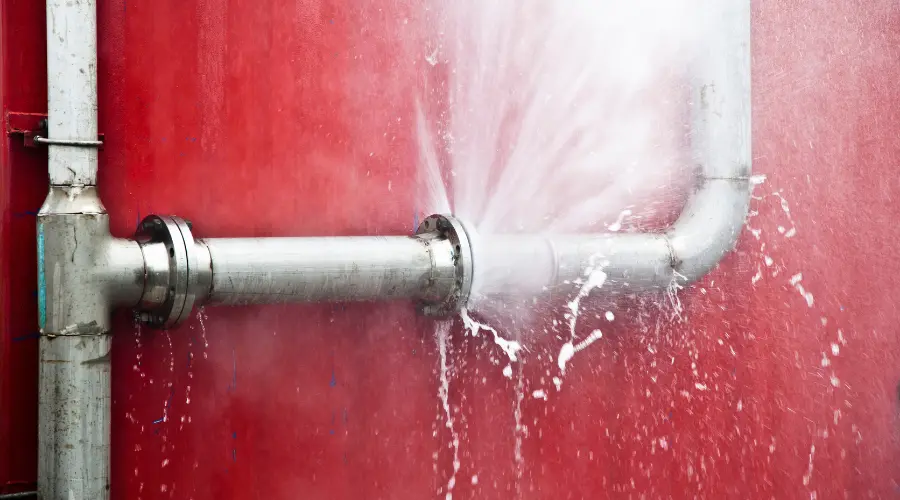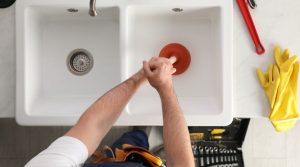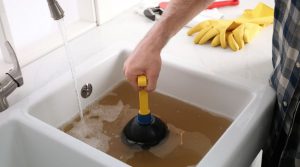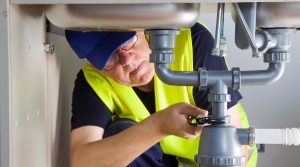The Nightmare Scenario Every Homeowner Fears
Have you ever woken up to the sound of rushing water where there shouldn’t be any? Or stepped into an unexpected puddle in your basement? Few home emergencies create as much immediate panic as a burst pipe. Water can damage your home within minutes, destroying flooring, drywall, furniture, and irreplaceable personal belongings.
In this comprehensive guide, we’ll walk you through exactly what to do when disaster strikes, how to minimize damage before professional help arrives, and most importantly, how to recognize the warning signs before a catastrophe occurs.
Emergency Response: The First 15 Minutes Are Critical
When a pipe bursts, every second counts. Follow these immediate steps to minimize water damage:
1. Shut Off Your Main Water Valve
- Locate it now: Don’t wait for an emergency to find your main water shutoff valve
- Where to look: Typically found in basements, crawl spaces, near water heaters, or where the water line enters your home
- How to turn it off: Turn clockwise until firmly closed (righty-tighty)
- Test it annually: Ensure it’s not stuck or corroded when you actually need it
2. Drain Your System
After shutting off the main valve:
- Turn on all cold water faucets
- Flush all toilets once
- This relieves pressure and drains remaining water from pipes
3. Turn Off Electricity to Affected Areas
- Water and electricity create dangerous conditions
- Locate your electrical panel
- Turn off circuits to water-damaged areas
- Use extreme caution – avoid standing in water when handling electrical systems
4. Document Everything
Before cleanup:
- Take clear photos and videos of all damage
- Note the time and date of the incident
- Document any visible pipe damage
- This documentation will be crucial for insurance claims
Immediate Damage Control Measures
With the water source contained, now focus on protecting your property:
5. Remove Standing Water
- Use buckets, mops, towels for small amounts
- For larger flooding, consider renting a wet vacuum
- Move from highest to lowest points
6. Protect Your Belongings
- Remove undamaged items from the affected area
- Lift furniture with aluminum foil under legs
- Move rugs, books, electronics, and valuables
- Place plastic sheeting under items that can’t be moved
7. Begin Drying the Area
- Open windows and doors if weather permits
- Use fans to circulate air
- Position dehumidifiers in the wettest areas
- Remove wet materials that can’t be salvaged
8. Address the Burst Pipe
For a temporary emergency fix until a plumber arrives:
- Pipe clamps: Apply a rubber patch with a pipe repair clamp
- Pipe tape: Wrap leak-stopping tape tightly around small cracks
- Epoxy putty: Knead and apply to small holes or cracks
When to Call a Professional Plumber
While temporary fixes can help in an emergency, you’ll need professional assistance for proper repairs:
Call immediately for:
- Multiple burst pipes
- Pipes in walls or ceilings
- Major flooding
- Sewage backups
- If you’re unsure of the source
What to tell your plumber:
- Location of the burst
- Extent of water damage
- Age of your plumbing system
- Any temporary repairs you’ve made
- Whether water is still leaking
Common Causes of Burst Pipes
Understanding why pipes burst can help prevent future emergencies:
Freezing Temperatures
- Water expands when frozen, creating pressure
- Uninsulated pipes in exterior walls are most vulnerable
- Pipes in attics, garages, and crawl spaces face highest risk
Corrosion
- Older metal pipes degrade over time
- Hard water accelerates corrosion
- Look for discoloration, flaking, or dimpling on visible pipes
Water Pressure Issues
- Excessive pressure strains pipe connections
- Most residential pipes designed for 40-60 PSI
- Consider installing a pressure regulator if over 80 PSI
Poor Installation
- Improper fittings create weak points
- Pipes not secured properly can shift and stress joints
- DIY plumbing without proper knowledge increases risks
Preventive Measures to Avoid Future Burst Pipes
An ounce of prevention is worth gallons of cleanup:
For Cold Weather Protection:
- Insulate exposed pipes with foam sleeves
- Keep thermostat at 55°F minimum, even when away
- Open cabinet doors under sinks during cold snaps
- Let faucets drip slightly when temperatures plummet
- Seal air leaks near pipes with caulk or insulation
Year-Round Protection:
- Schedule annual plumbing inspections
- Install water leak detection systems
- Replace aging pipes before they fail
- Monitor water pressure and install regulators if needed
- Know the signs of impending pipe problems
Seasonal Pipe Maintenance ChecklistDocument
Warning Signs Your Pipes May Be at Risk
Learn to spot these early indicators before disaster strikes:
Visual Signs:
- Bulging or frost on visible pipes
- Discoloration, dimpling, flaking, or rust
- Moisture, warping, or stains on walls/ceilings
- Cracks in pipe joints or connections
Audible Signs:
- Banging or knocking when turning water on (water hammer)
- Whistling or screeching from faucets (high pressure)
- Gurgling in drains or toilets
- Running water sounds when nothing’s in use
Performance Signs:
- Reduced water flow
- Fluctuating water pressure
- Unexplained increases in water bills
- Unusual water color or odor
Insurance Considerations for Burst Pipes
Most homeowner’s policies cover sudden, accidental water damage from burst pipes, but preparation is key:
- Document your home’s condition: Take inventory photos annually
- Know your coverage: Review policy details before emergencies
- Act quickly: Most policies require immediate action to prevent further damage
- Keep receipts: Document all emergency repair expenses
- Consider additional coverage: Standard policies may not cover slow leaks or backup of sewers and drains
Call to Action: Be Prepared Before Disaster Strikes
Don’t wait for an emergency to create your burst pipe action plan:
- Create an emergency plumber contact list: Research reputable 24/7 emergency plumbers in your area
- Map your home’s plumbing: Mark the location of shut-off valves, critical junctions, and vulnerable areas
- Assemble an emergency kit: Include pipe repair tape, clamps, bucket, mop, and towels
- Schedule a preventive inspection: Professional plumbers can spot potential issues before they become catastrophes
The Bottom Line on Burst Pipes
A burst pipe can happen to anyone, but your response in those critical first minutes determines the extent of damage. By understanding prevention, practicing emergency procedures, and knowing when to call professionals, you can protect your home from one of homeownership’s most common disasters.
Remember: When it comes to plumbing emergencies, preparation and quick action are your best defense against extensive damage and costly repairs.
Need emergency plumbing assistance now? Contact CBJ Plumbers – Plumbing Services in NJ
local licensed plumber immediately. Water damage compounds by the minute – don’t delay when dealing with burst pipes.





